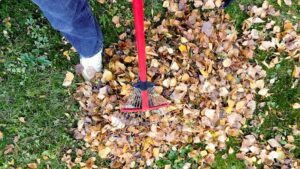Fire Hazards in the Yard: How to Keep Your Lawn Clutter-Free to Prevent Fires?
 Wildfire season continues to wreak havoc in the US, with up to 40,474 wildfires reported since January 2021. Homeowners are requested to identify fire hazards in the yard to prevent dried debris from fueling wildfires in the area.
Wildfire season continues to wreak havoc in the US, with up to 40,474 wildfires reported since January 2021. Homeowners are requested to identify fire hazards in the yard to prevent dried debris from fueling wildfires in the area.
These efforts have become a vital part of community response against such natural disasters. Moreover, the current drought and heat create the ideal conditions for home fires and related accidents. It’s why 911 Restoration of PG County advises residents to take all necessary measures to declutter their lawns to do their part in preventing potential wildfires from erupting or worsening.
Here’s a comprehensive guide to getting you started:
Identifying Fire Hazards in the Yard
According to the National Fire Protection Association (NFPA), a significant amount of flammable material in the yard can increase the likelihood of house fires. They consider the first 60-100 feet area around residential buildings as the home ignition zone.
Luckily, regular lawn maintenance and strategic landscaping alterations can reduce outdoor fire hazards. We can help you make an informed decision by listing the top three ignition sources on your premises.
They are as follows:
1. Surface Fires:
Minor fires can occur when dry grass, leaves, and debris react to environmental changes. It starts with tiny sparks that turn into raging fires when the flames reach your wooden structures (i.e., decks, garden sheds, and fences). These types of house fires can destroy homes and become uncontrollable without emergency response teams’ intervention.
2. Ember Attacks:
If you live near a forest or park, your residence can be exposed to airborne embers carried by the wind from the primary ignition site. These burning pieces contain combustible wood/vegetative material that comes in contact with flammable material present on your property. Potential fire hazards in the yard include firewood piles, heaps of raked leaves, wooden patio/deck furniture, roof panels, and cluttered gutters.
3. Crown Fire:
Burning tree canopies and overgrown shrubbery can emit an extensive amount of heat in the surrounding areas. Sometimes it covers a 100-mile radius with embers and ash particles getting blown everywhere. These big flames can ignite fires in wooden homes and structures (i.e., decks, patios, roofs, out sheds, and detached buildings).
A cluttered lawn leads to spontaneous combustion of the dirt, debris, and litter collecting in your yards. You can protect your home from fire damage by clearing the preventable messes and maintaining lawns regularly to reduce risks in these targeted areas.
How to Keep Your Lawn Clutter Free?
Inspect your yards and look for possible signs of outdoor fire hazards. Create a decluttering checklist to address problem areas and improve the overall safety of the home ignition zone.
Here are a few steps to follow:
Lawn Maintenance
If your garden has become a graveyard of dead trees and debris, you might want to plan a revival sooner than later. Here are a few proactive steps you can take to keep things under control:
- Spruce your yard by weeding the flowerbeds and vegetable patches.
- Prune and cut away overgrown shrubbery and tree canopies
- Plant aspen and broad-leaved trees that are less flammable than common evergreens.
- Rake the autumnal leaves that have fallen and twigs regularly, ensuring that the dried debris gets disposed of correctly.
- Fill bare patches of grass and revive dead flower beds to prevent poor vegetation from becoming fuel for wildfires.
In other words, maintaining your lawns throughout the season can reduce the chances of fire accidents.
Finding Practical Ways to Clear the Clutter
Garden sheds and storage areas within your premises are potential fire hazards in the yard. Create a seasonal schedule to clear out the mess and fix vulnerable structural areas to prevent home fires.
Here’s are a few things you can do:
- Repair or replace worn-out wooden furniture and decor with heat-resistant alternatives.
- Keep flammable storage items at a safe distance from heating sources (i.e., furnaces, water heaters, heating vents, and portable heaters).
- Rent an offsite storage unit to keep excess clutter away from your property
- Avoid piling firewood and construction material within the home ignition zone.
- Clean gutters and drainage systems to prevent
Besides this, make sure your yard has multiple entryways, and hoarded items don’t block your doorways.
Parting Words
In the end, keeping your lawn clutter-free can limit the dangers of fire hazards in the yard. It can help protect you and your household from devastating property loss and severe destruction. You can start by taking time out to dispose of flammable debris sustainably. Organize outhouses and garden sheds routinely to minimize risks. You can even contact local hoarding cleanup companies to assist you in this matter.
The primary goal here remains to eliminate potentially hazardous clutter that can cause house fires or add fuel to wildfires in the area. In case of emergencies, you can rely on our emergency home recovery services (i.e., fire damage restoration and water damage restoration services).
Are you dealing with a fire emergency? Contact 911 Restoration of PG County by calling (301) 246-8517911 or scheduling a home inspection for fire damage restoration service online.


